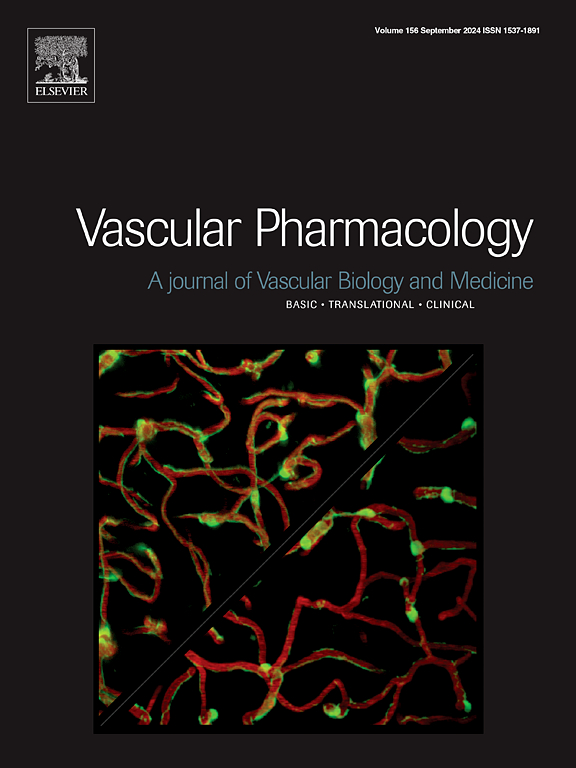Protective role of the longevity-associated BPIFB4 gene on cardiac microvascular cells and cardiac aging
IF 3.5
3区 医学
Q2 PHARMACOLOGY & PHARMACY
引用次数: 0
Abstract
In recent years, the role of the cardiac microvasculature in modulating the symptoms and disease progression of patients affected by cardiac pathology has been reconsidered. The term cardiac microvascular disease (CMD) describes the set of functional and/or structural alterations of the cardiac microvasculature that reduce the ability of the heart to adequately increase its coronary blood flow to keep up with increased metabolic demand. CMD is involved in the evolution of heart disease of both ischemic and non-ischemic origin as well as in cardiac aging. The primary actors involved in this process are the cells of the stromal compartment, whose nature and biology are now investigated to a new level of detail thanks to single-cell omics studies. Recent studies on the genetics of extreme longevity have identified a polymorphic haplotype variant of the BPIFB4 gene that confers prolonged life span and health span, atheroprotective advantages, and an improved immune response.
The aim of this review was to focus on the beneficial effects of the longevity-associated variant (LAV) of BPIFB4 on cardiac microvascular cell biology, providing novel and exciting mechanisms of its action directed against the development or progression of many age-related cardiovascular diseases, thus emphasizing its translational therapeutic potential.

长寿相关BPIFB4基因对心脏微血管细胞和心脏衰老的保护作用
近年来,心脏微血管在心脏病变患者的症状和疾病进展中的调节作用被重新考虑。心脏微血管疾病(CMD)一词描述了心脏微血管的一系列功能和/或结构改变,这些改变降低了心脏充分增加冠状动脉血流量以跟上增加的代谢需求的能力。CMD参与缺血性和非缺血性心脏病的演变以及心脏衰老。参与这一过程的主要参与者是间质室的细胞,由于单细胞组学研究,其性质和生物学现在被研究到一个新的详细水平。最近对极端长寿基因的研究已经确定了BPIFB4基因的多态单倍型变体,该基因赋予延长寿命和健康寿命,动脉粥样硬化保护优势,并改善免疫反应。本综述的目的是关注BPIFB4长寿相关变异(LAV)对心脏微血管细胞生物学的有益作用,提供其针对许多年龄相关心血管疾病的发生或进展的新颖而令人兴奋的作用机制,从而强调其转化治疗潜力。
本文章由计算机程序翻译,如有差异,请以英文原文为准。
求助全文
约1分钟内获得全文
求助全文
来源期刊

Vascular pharmacology
医学-药学
CiteScore
6.60
自引率
2.50%
发文量
153
审稿时长
31 days
期刊介绍:
Vascular Pharmacology publishes papers, which contains results of all aspects of biology and pharmacology of the vascular system.
Papers are encouraged in basic, translational and clinical aspects of Vascular Biology and Pharmacology, utilizing approaches ranging from molecular biology to integrative physiology. All papers are in English.
The Journal publishes review articles which include vascular aspects of thrombosis, inflammation, cell signalling, atherosclerosis, and lipid metabolism.
 求助内容:
求助内容: 应助结果提醒方式:
应助结果提醒方式:


